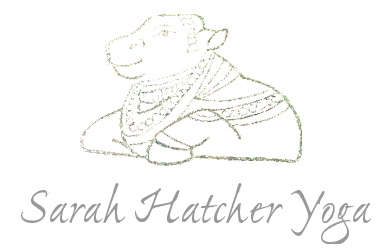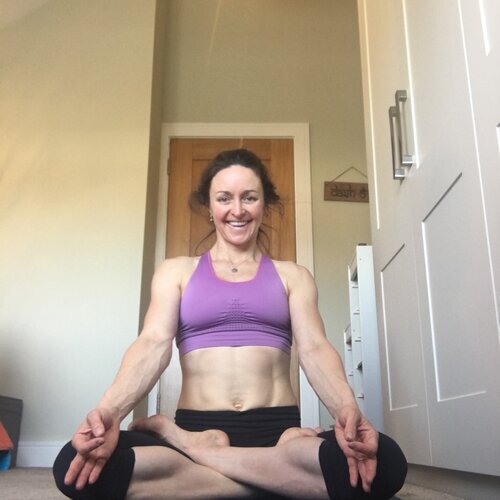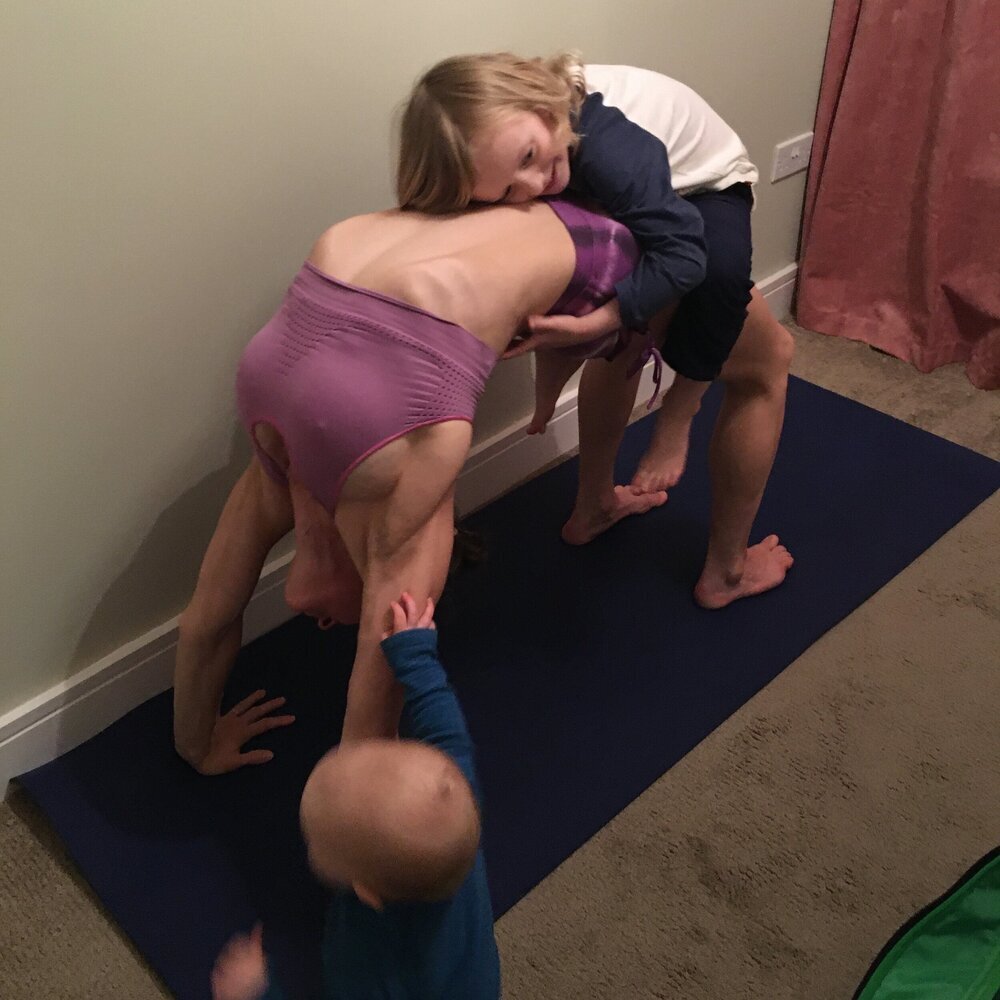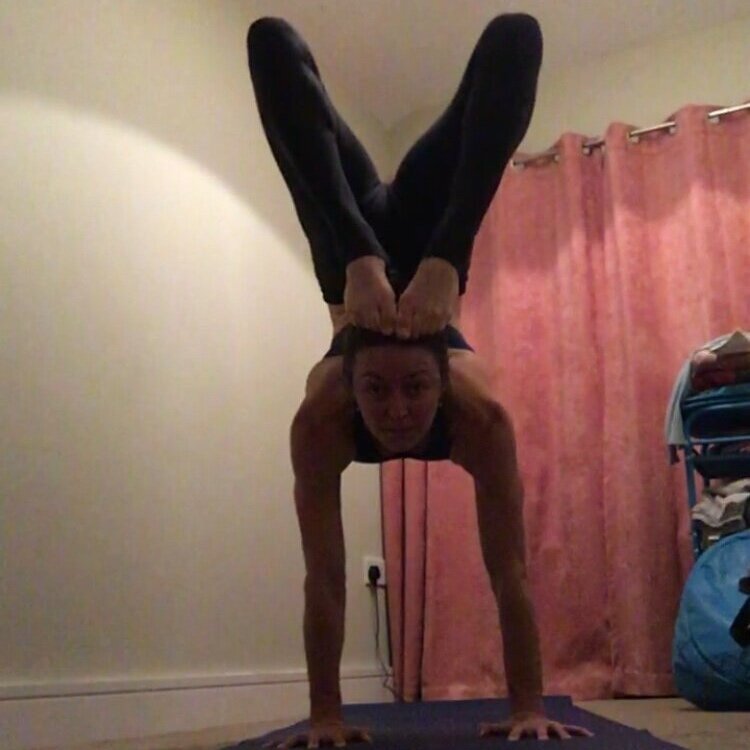Home Practice: how to practice safely and effective on your own
Safe and Effective Home Yoga Practice
This post was originally posted the first week of lockdown in 2020. A year later I have decided to re-post this as it is more important than ever to continue to find space, build your practice environment in a safe way and continue to dive into yoga. It has been edited to suit us all who continue to practice in a lock-down environment…even a year later.
When we begin yoga, we often think that the practice has to be done in a certain way, for a specific amount of time (at least an hour and a half, right?) and at a shala or in the right room, and only with an empty stomach, etc.
The unrealistic expectations overwhelm us on how yoga has to be practiced: doubts swallow us, and then we end up not practicing at all.
Guess what?
We can do the practice in any shape or form. When we moved to Dublin, I was practicing at 6 pm in the evening once Tim finished his work. Was this perfect or ideal? I would say not, though at the time it was just right. This shared, there are some benefits to getting on the mat no matter what, and at whatever time and even in the most absurd of times and circumstances: it pays off in the end.
Like right now. Now is the time to practice. Things are difficult, unknown and there are doubts everywhere. Take the time for yourself to cultivate your personal wellness and clarity. Carve out time to get on your mat, even if it is the smallest amount.
I recognize that it is hard to get on your mat. Even harder now because you have to do it at home! And practicing at home has its positives and negatives. Your job right now is to make practicing at home a successful event, and some work needs to be done in order to do this.
Try these tried and tested, bomb-proof recommendations outlined below. And share it with someone who says they don’t have the time or space to practice. Be a good friend and help them get on their mat everyday!
Rule 1):
Practice yoga by at the same time of day that works for you;
As long as you have a clear intention and are hungry to cultivate the smallest glimpse of quiet and peace inside you every single day - this works. And you know that getting on your mat every single day could even bring you joy and often sorrow - but with this glory of getting on your mat for fifteen minutes or forty-five minutes, or even an hour and a half, you rejoice in the freedom and victory that you practiced!
No matter what happens on that day, stick with the routine of the time you set. These are a few time frames that are possible:
evenings- after you put the kids to bed, or right when you get home from work; before you eat dinner;
mornings - before the kids wake up or before you to go work;
on your lunch break - you eat your lunch during your work that day after you practice in a small room or somewhere quiet.
Take away the shame and the guilt that your practice has to be a certain way or look like some photograph of someone famous. Leave the sorry thoughts behind and just start breathing. You can do the shortest of practices - even 5 A’s and a couple of B’s with seated breathing, and call it good for that day. Goodness, add some seated posture or one inversion with pranayama, and you are still a very good yogi.
Sure, you can dive in and do the longest of practices and burn the tapasic fire through your being and be a yogi, too. However let’s be honest, those big fires only last so long…
My teacher David Garrigues shared this beautiful metaphor to me once:
“If you could take five postures with you on a desert island...and those were the only postures you could do for your entire life, which ones would they be?”
Simply put - do those five and call it good: practice the five asanas every single day that you would have on your secluded island. Choose wisely good yogi, and do them with glory and joy! Oh the victory, you made it on your mat!
Rule 2):
Stagger your practice over the course of the week to three practices: this means do a short, a medium, and a long practice; repeat this plan again to make a six days a week plan, or repeat one or two of them.
For those who practice full primary, here is a basic and effective practice plan:
Monday:
Surya A and B plus the first 5 Standing asanas (always follow the krama - the order as prescribed - don’t mix and match) followed by seated breathing
(25 minutes including savasana): SHORT
Tuesday:
Surya A and B plus all of Standing and the first five seated asanas of primary series followed by full Finishing
(45 minutes-1 hour - including savasana); MEDIUM
Wednesday:
Surya A and all of Standing to Baddha Konasana then full Finishing
(1 Hour-1 Hour and a half, including savasana) MEDIUM TO LONG
Thursday:
Once a week do full primary then Full Finishing
(1 Hour and a Half-2 Hours, including savasana) LONG
Friday:
Repeat what you did on Tuesday but instead of doing the first five of primary do the last six of primary (because you already went to Baddha K earlier in the week - this means finishing primary over the course of the week) into finishing
(45 Minutes to an 1 Hour) MEDIUM
Saturday or Sunday:
Repeat what you did on Monday, Tues or Thursday SHORT or MEDIUM or LONG
In this model, you have a variety of choices: you get two days of short, two days of medium and two days of long. This is the basic plan. HOWEVER! You can always do LONG or MEDIUM every day if you have the time.
Be honest and realistic though good yogi: say you are having a *!(@)! week...this means you get on your mat every single day and you are just surviving doing SHORT practices all six days. The ashtanga yoga police won’t get you, life got the better of you, and did what you could. You’ll get back on track the following week, good yogi. Exhale, it’s okay to have a full six-day a week of just surya Namaskaras with easy breathing.
Another scenario would be: maybe during an eventful week, on a ‘Tuesday’, when you were planning on doing the SHORT practice, you ended up having the whole evening off as your husband or wife took the kids and made dinner (legend!), so you ripped off a two-hour practice. This would mean the following day you would have to do short or medium to recover. Don’t beat yourself up over it - just stick with the same time of practice and do your best.
The theme here is to rotate through your plan AND to practice at the same time every day. Good yogi, you need 24 hours to recover from practicing. This is ideal for your mind and body. If you practice at night, stick with nights. If you practice in the mornings, stick with mornings…
Another scenario of practice is that if you do multiple series of practices, meaning you are proficient in primary, intermediate and advanced, this would mean to do a little bit each day of the series, and rotate each day. Always do full standing and full finishing. Do a little of primary one day; then another day intermediate and then on another day, do some of third. This means do one series per day and if you are modifying each respective series, be sure not to change the sequence. Always do things in order and once you do Kapotasana (say in intermediate series) don’t be going backwards in the series and go doing pasasana. Stick with the order! And always do Surya A and B with full standing postures and full finishing with Savasana.
What do I do? Well, right now I start my week in this order and try for this plan:
Sunday - Intermediate - sometimes just to Karandavasana - always full finishing.
Monday - Third - I try to get to Hanumanasana, often it is just to Purna Matsyendrasana - always full finishing.
Tuesday - Fourth - I try to get to Ekapada Kapotasana - always full finishing.
Wednesday - Primary - sometimes all of it sometimes just to Baddha K - always full finishing.
Thursday - Fourth - I try to get to Ekapada Kapotasana - always full finishing - a repeat as this is the series I’m working on.
Friday - Survival practice (Surya A and B, some standing and some breathing)
You may ask, “What is a ‘survival practice’?”
The Survival Practice
I call the survival practice the practice that takes all of you to do. Pulling from your soul. Get it out. Do it no matter what. How many people out there do this? More than you think. Actually most people! We are all working hard in our lives to get on our mats. To have the freedom to do so.
Oftentimes the ‘survival practice’ reminds us of this and so therefore, in it’s ugly shape and form - it is often the most beautiful on the other end when you finish and celebrate that you actually did it. In hindsight, “Oh, I practiced during that crazy time. Can’t believe I did that. It meant so much. It was my safety net. My home.” In this wild and crazy world, we have to practice to rekindle a relationship with ourselves so that we may have the courage to share this side of ourselves with the world around us.
If you are a mamma or a pappa, or you work full time - you owe it to the universe to practice to your fullest so the smallest glimpse of insight of who you are may come out - and you can learn about it slowly with time and patience. With practice it becomes more comfortable...and then with time, you do change, you do act differently, and then, you actually are living your yoga. Your friends tell you, you know it too.
You are living your yoga! AND even if you don’t know you do, you are sharing it with the world around you.
Rule 3):
Follow a strict diet.
What?! No fair you say! Yes it is true, yogi. If you are going to compromise your practice (i.e. shorten it by doing whatever you can on any given day and modifying), then you will have to be sure you are taking care of your body by eating as little as possible in the afternoon if you are practicing in the evening; not eating too late if you are practicing early in the morning; and watching what put into your temple. This means just because your practice isn’t at a shala filled with sweaty people and surrounded by gurus, you still have to have the mindset of a yogi and stay committed to health and wellness inside and out: eat like you are on a retreat every single day.
Rule 4):
Practice the Eight limbs every single day
Stick to the plan to practice all eight limbs - watch what you say to people, be mindful to your partner; watch how you stand as you are holding your children or breastfeeding; breathe deeply while at work or working around the house (maybe even do some pranayama - no one will know); and watch your thoughts. You can fully cultivate all eight limbs - especially the first four every single day. And the final four of inner limbs of withdrawing the mind, concentrating, meditating and finally, absorbing what is happening inside and all around you - this is called samyama - it will happen all at once, just as long as you are thinking of yoga, being a yogi, and keeping your mind on God. Remember yogi, “God is everywhere.” - SK Pattabhi Jois.
Rule 5):
Make a space in your home that is practical and quiet. Prepare it the night before.
This one is my favourite because it works! Set the space before you go to bed if you are practicing in the morning; lay out the clothes you are going to wear and have the mat ready to roll out. This means that all your tools are prepared for you: the space, the clothing…not to be underestimated is the determination, discipline and dedication!
If you are practicing in your child’s room (like I am), tidy the room the night before so that all you have to do is roll out the mat to begin. If it is in your bedroom, be sure to make the bed and tidy up the space after waking up and before you begin your practice.
Prepare the space so you can be successful by de-cluttering the space around you. If it is a narrow hallway, move the furniture the night before so you have room to move safely and freely.
Rule 6):
Turn off you phone and don’t look at it; also do not wear a watch.
If you need to watch the clock - put the phone away and lay a watch next to your mat so you can see the time or have a clock near you that you can see. Do not touch your phone, check it or look at it: all will be well in the world while you practice! If you are waiting for a call or there is a chance of an emergency that you may need to be contacted, lay the phone face down and don’t look at it unless you are called.
Preferably, keep it on silent.
Rule 7):
Practice with your Friends Online or Reach out to people who may also be practicing alone
If you are really struggling to get on your mat, use your online resources around you. Look to your teacher and ask for a 1:1 online private. Get on an online platform and listen to a live class, pay attention to who is teaching around you and see if you can join in on their zoom classes. Don’t be ashamed if you have to take class once in a while, being the student, listening and following along by modifying what you are doing in order to do so, may be just the right information to keep you going.
Below are some references to keep you going!
Happy practices to you yogi, and please don’t skip your practice.
ॐ śāntiḥ śāntiḥ śāntiḥ
Resources:
seradee@sarahhatcheryoga.com - email me for details on how to join my daily 7 am GMT Zoom class. Visit my new Youtube channel for some inspiration
David Garrigues - check out his website on how he is offering online courses as well as video courses.
Meadowlark Yoga - check out how Karen Kirkness and her team of expert teachers like Emma Isokivi, Amy Hughes, Nadine Watton are offering loads of online options.
Joanna Darlington - in the US - visit her website and participate in her online offerings for expert teachings.
Participate in a spring cleanse with Clare Fulton or Elise Hill @simpleliving.ayurveda (Instagram)
David Miliotis - what his Youtube channel for great instruction in the classic Ashtanga Yoga method and in chanting practices - get in contact with him at Ashtanga Yoga Orange County.




